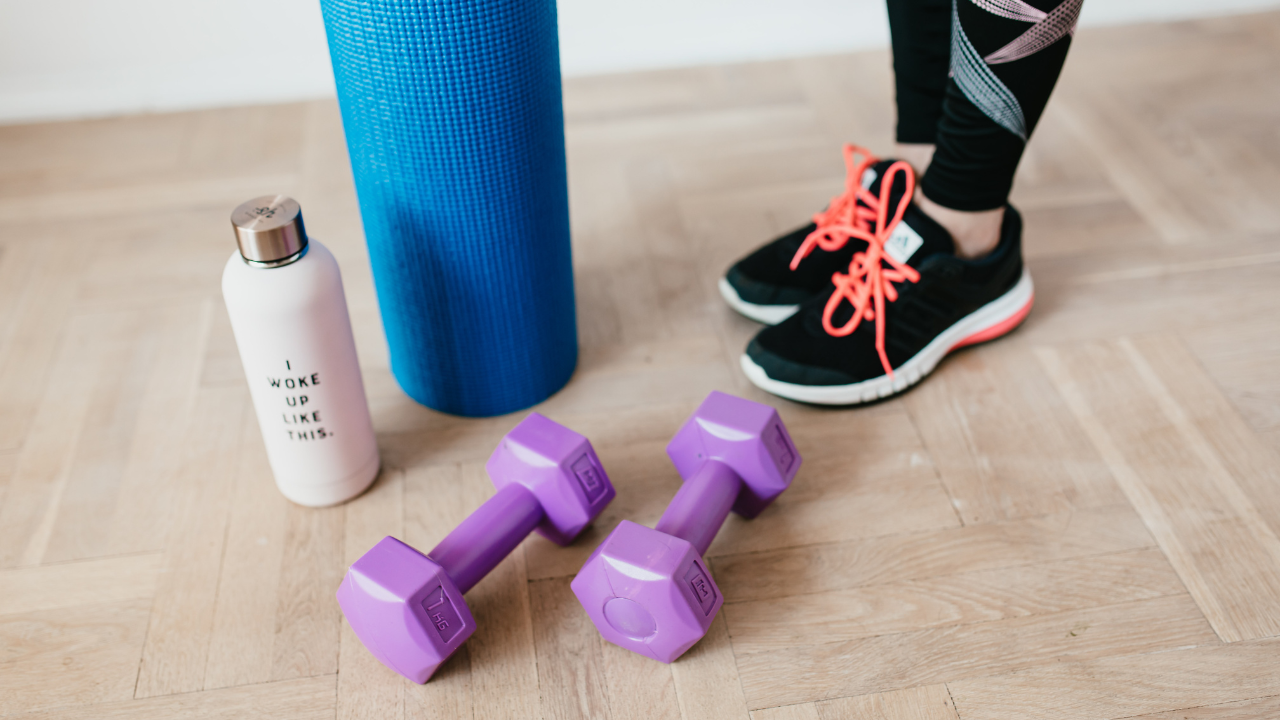
Key Takeaways
- Plan strategically with batch cooking and versatile ingredients to create multiple meals from one prep session
- Focus on nutrient-dense foods that support women's specific health needs (iron, calcium, B vitamins)
- Utilize time-saving tools like slow cookers and meal planning apps to streamline your healthy eating routine
- Embrace "better than nothing" progress instead of perfection when life gets hectic
- Consider meal delivery services as a valuable option when time is extremely limited
Ever stood in front of your refrigerator at 7 PM after a long day, too exhausted to cook but knowing another takeout meal isn't what your body needs? If you're nodding your head, you're far from alone. With approximately 75% of women serving as the primary meal preparers in their households while juggling careers, family obligations, and personal goals, the daily question of "what's for dinner?" can feel particularly overwhelming.
The good news? Healthy eating doesn't require hours in the kitchen or complicated recipes. The secret lies in strategic planning, efficient meal prep, and embracing simple but nutritious options that work with your busy life—not against it.
Understanding Women's Unique Nutritional Needs
Before diving into meal prep strategies, it's worth considering the specific nutritional requirements that make women's dietary needs unique.
Focus Areas for Women's Nutrition
Women typically need particular attention to:
- Iron: Menstruating women lose iron monthly and require approximately 18mg daily (compared to 8mg for men)
- Calcium: Essential for bone health, especially as women age and estrogen levels decrease
- B vitamins: Critical for energy production and hormonal balance
- Protein: Supports muscle maintenance, especially important as women naturally have less muscle mass than men
Why does this matter for meal prep? When your time is limited, prioritizing these nutrients ensures you're getting the biggest health benefits from your efforts. As statistics show, women who cook at home at least five times a week are 47% more likely to live longer, suggesting that even simple home-cooked meals can have profound health impacts.
The Mindset Shift: From Perfection to Progress
Before we get into practical meal prep strategies, let's address the biggest obstacle many women face: perfectionism.
How many of these thoughts sound familiar?
"If I can't prepare an Instagram-worthy, perfectly balanced meal, why bother?"
"I don't have two hours on Sunday to prep everything, so I might as well give up."
"I tried meal prepping once, but I got bored of the food by Wednesday."
People Also Ask: How can I eat healthy when I have no time to cook?
The answer lies in shifting from an all-or-nothing approach to embracing "better than nothing" improvements. Research consistently shows that small, sustainable changes lead to lasting habits, while perfectionism often leads to burnout and giving up entirely.
Here's how to reframe your approach:
- Start small: One prepped breakfast or lunch is better than none
- Embrace shortcuts: Pre-cut vegetables, rotisserie chicken, and frozen grains are perfectly acceptable time-savers
- Find your "minimum effective dose": What's the smallest amount of prep that would make a meaningful difference to your week?
A helpful strategy is linking your meal prep to your existing values. Instead of seeing it as another task, view it as an act of self-care or an investment in your future health and energy.
Time-Saving Meal Prep Strategies That Actually Work
Now let's get practical. Here are proven strategies that have helped thousands of busy women maintain healthy eating habits without spending hours in the kitchen.
1. The Power Hour Prep Session
If you can carve out just 60 minutes once a week, you can dramatically improve your eating habits. Here's how to maximize that hour:
The Power Hour Formula:
- Roast vegetables while simultaneously cooking a grain (like quinoa or brown rice)
- Prep and marinate a protein source
- Make one versatile sauce or dressing
- Pack grab-and-go snacks into containers
This approach gives you building blocks for multiple meals rather than fully assembled dishes that can get boring by mid-week.
2. Strategic Batch Cooking
Rather than making complete meals, focus on versatile components that can be mixed and matched throughout the week.
| Component | Weekend Prep | Weekday Meals |
|---|---|---|
| Proteins | Roast chicken, bake salmon, cook lentils | Chicken salad, salmon bowls, lentil soup |
| Complex Carbs | Bake sweet potatoes, cook quinoa, prepare brown rice | Breakfast bowls, lunch bases, dinner sides |
| Vegetables | Roast vegetables, chop raw veggies, make veggie soups | Salad toppers, side dishes, snacks with dip |
| Flavor Boosters | Homemade dressing, sauces, spice blends | Transform basic ingredients into different cuisines |
A study published in the Journal of the Academy of Nutrition and Dietetics found that women who spend more time preparing meals at home tend to have higher energy and nutrient intakes—but the key is efficiency, not endless hours in the kitchen.
3. Leveraging Kitchen Technology
The right tools can dramatically reduce your active cooking time:
- Slow cooker: Set it in the morning, return to a complete meal
- Instant Pot: Make beans, soups, or whole grains in a fraction of the time
- Food processor: Cut vegetable prep time by 75%
- Blender cup: Make nutritious smoothies in the same container you'll drink from (check out Ladies First's convenient blender cups for an on-the-go option)
People Also Ask: What kitchen tools save the most time for meal prep?
The best investments are multi-tasking tools that align with your eating preferences. If you love smoothies, a quality blender is essential. If one-pot meals are your go-to, an Instant Pot might be worth every penny.
Quick & Nutritious Meal Ideas for Every Occasion
Let's break down some specific meal ideas that require minimal prep but deliver maximum nutrition.
Breakfasts That Fuel Your Day
Overnight oats: Mix equal parts oats and milk (dairy or plant-based), add chia seeds and your preferred sweetener. Refrigerate overnight and top with fruit in the morning.
Make-ahead egg muffins: Whisk eggs with vegetables and bake in a muffin tin. Store in the refrigerator and reheat for a protein-packed breakfast.
Smoothie freezer packs: Portion fruits, greens, and add-ins into freezer bags. In the morning, empty into a blender, add liquid, and blend.
Lunches That Keep You Energized
Mason jar salads: Layer dressing on the bottom, firm vegetables next, proteins, then greens on top. Shake when ready to eat.
Grain bowls: Combine pre-cooked grains, roasted vegetables, protein, and a flavorful sauce.
Wraps and roll-ups: Use large-leaf greens or whole-grain wraps with hummus, protein, and vegetables for a hand-held meal.
Quick Weeknight Dinners
Sheet pan meals: Arrange protein and vegetables on a sheet pan, drizzle with olive oil, season, and roast until done.
"Choose your own adventure" stir-fry: Sauté any protein with any vegetables, add sauce of choice, and serve over rice or cauliflower rice.
Build-your-own bowl night: Set out prepped components and let family members assemble their own meals.
For more inspiration on energy-boosting snacks that complement these meals, visit Ladies First's guide to energy-filled snack options, which offers additional ideas for keeping your energy levels stable throughout busy days.
Modern Solutions: Meal Delivery Services
When time is extraordinarily tight, meal delivery services can be a valuable option. According to recent data, over 90% of meal kit users report that these services have improved their quality of life, with 70% planning to continue using them long-term.
What to Look For in a Meal Kit Service:
- Nutritional balance: How well do the meals align with your specific needs?
- Prep time: Some require 30+ minutes of cooking, while others come ready to heat
- Flexibility: Can you skip weeks or change delivery schedules easily?
- Dietary accommodations: Options for specific eating patterns (vegetarian, gluten-free, etc.)
- Packaging: Consider the environmental impact of packaging materials
The most successful approach often combines some meal kit use with simple home cooking, giving you flexibility for particularly hectic weeks while maintaining control over most of your meals.
Building Sustainable Habits That Last
All these strategies only work if they become consistent habits. Here's how to build meal preparation into your lifestyle:
1. Start with Your "Why"
Connect your meal prep habits to deeper motivations:
- More energy for activities you enjoy
- Better health outcomes long-term
- Financial savings over takeout
- Environmental benefits of less food waste
2. Create Accountability Systems
- Buddy up: Find a friend to meal prep with or share recipes
- Join a challenge: Ladies First regularly offers health and fitness challenges that can provide structure and accountability
- Track progress: Use a simple app to note improvements in energy, mood, or health markers
3. Manage Decision Fatigue
Decision fatigue can derail even the best meal prep intentions. Combat it with:
- Theme nights: Designate specific cuisines or meal types for certain days (Meatless Monday, Taco Tuesday)
- Rotating meal list: Develop a core set of 10-15 meals your family enjoys to cycle through
- Meal templates: Follow a formula (protein + vegetable + grain) rather than specific recipes
Overcoming Common Obstacles
People Also Ask: How do I stick with meal prepping when I get bored easily?
Meal prep burnout is real! Here are strategies to overcome common challenges:
For Variety Seekers
- Prep components rather than full meals to mix and match
- Rotate through different cuisines and flavor profiles
- Use the same base with different sauces and toppings
For the Ultra Busy
- Identify your most challenging meal of the day and focus efforts there first
- Use "semi-homemade" approaches combining prepared and fresh elements
- Designate one "cooking night" where you make enough for several leftover meals
For Those Feeding Families
- Create a "base meal" that can be customized to different preferences
- Involve family members in prep (even young children can help wash produce or tear lettuce)
- Gradually introduce new foods alongside familiar favorites
Remember, healthy eating strategies should adapt to your life circumstances. As noted by nutrition experts, the best eating plan is one you can actually maintain long-term.
For more detailed guidance on establishing healthy habits that stand the test of time, check out Ladies First's tips for making healthy habits stick, which offers proven strategies for building sustainable routines.
Putting It All Together: Your Action Plan
The path to consistent healthy eating as a busy woman doesn't require a complete lifestyle overhaul. Start with these actionable steps:
- This weekend: Spend 30 minutes planning 3-4 simple meals for the week ahead
- Choose one prep task: Whether it's washing and chopping vegetables or cooking a batch of protein
- Evaluate your kitchen: Identify one tool or container that would make healthy eating easier
- Set a reminder: Schedule your next meal prep session like any other important appointment
- Find your community: Connect with like-minded women through Ladies First's community resources for ongoing support
Remember that eating well isn't about perfection—it's about making choices that support your health and energy, even in the midst of a busy life. With strategic planning, efficient meal prep, and realistic expectations, you can enjoy nutritious, home-cooked meals without sacrificing your precious time.
Ready to take your healthy eating habits to the next level? Contact Ladies First for personalized support and additional resources tailored to your unique lifestyle and goals.
What are the most time-efficient foods to meal prep for a busy week?
Foods with multiple uses win here! Roasted chicken can become salad toppers, sandwich fillings, or pasta additions. Cooked quinoa works for breakfast bowls, lunch salads, or dinner sides. Roasted vegetables can be sides, salad ingredients, or blended into sauces. Focus on versatile ingredients that can be remixed throughout the week rather than complete meals that might get boring.
How can I make sure I'm getting enough protein without spending hours cooking?
Rotisserie chicken, canned beans (rinsed), Greek yogurt, cottage cheese, pre-cooked lentils, and hard-boiled eggs are all excellent high-protein foods that require minimal or no preparation. For plant-based options, tofu can be marinated and baked in batches, and tempeh cooks quickly. Consider keeping protein powder on hand for smoothies when you're really pressed for time.
What's the minimum effective meal prep I can do if I only have 30 minutes?
Focus on your most challenging meal of the day. If breakfast is your downfall, prep overnight oats or egg muffins. If you struggle with healthy lunches, assemble grain bowls or salad jars. Even just washing and chopping vegetables for quick access or cooking one large batch of a versatile protein can save significant time throughout the week.
How do I maintain healthy eating when traveling for work?
Pack portable, nutrient-dense snacks like nuts, seeds, protein bars, and dried fruits. Research restaurants at your destination in advance and identify healthy options. Consider booking accommodations with at least a mini-fridge so you can store yogurt, fruit, and vegetables. Many hotel chains now offer refrigerators upon request, even in rooms that don't typically include them.
Can meal prepping actually save me money compared to takeout or convenience foods?
Absolutely! The savings are significant when you compare home-prepared meals to restaurant or delivery options. For example, a homemade grain bowl might cost $3-4 in ingredients versus $12-15 for a comparable takeout version. Even when factoring in the occasional food waste from meal prepping, most women find they save between 50-70% compared to relying on prepared foods and takeout.






